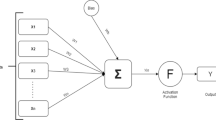Abstract
The objective of this paper is to use a challenging real-world problem to illustrate how a probabilistic predictive model can provide the foundation for decision-analytic feedforward control. Commercial data mining software and sales data from a market research firm are used to create a predictive model of market success in the video game industry. A procedure is then described for transforming the classification trees into a decision-analytic model that can be solved to produce a value-maximizing game development policy. The video game example shows how the compact predictive models created by data mining algorithms can help to make decision-analytic feedforward control feasible, even for large, complex problems. However, the example also highlights the bounds placed on the practicality of the approach due to combinatorial explosions in the number of contingencies that have to be modeled. We show, for example, how the “option value” of sequels creates complexity that is effectively impossible to address using conventional decision analysis tools.
Similar content being viewed by others
References
Apte C, Li B, Pednault E, Smyth P (2002) Business applications of data mining. Commun ACM 45(8): 49–53
Barry E, Kemerer C, Slaughter S (2006) Environmental volatility development decision and software volatility: a longitudinal analysis. Manage Sci 52(3): 448–464
Boutilier C, Dean T, Hanks S (1999) Decision-theoretic planning: structural assumptions and computational leverage. J Artif Intell Res 11: 1–94
Breiman L, Friedman J, Olshen R, Stone C (1984) Classification and regression trees. Wadsworth International Group, Belmont
Brooks RA (1991) Intelligence without reason. In: Proceedings of the 12th international joint conference on artificial intelligence, pp 569–595
Brydon M (2006) Evaluating strategic options using decision-theoretic planning. Inform Technol Manage 7(1): 35–49
Charne J (2006) Understanding and negotiating termination issues in video game development contracts. Comput Internet Lawyer 23(9): 27–33
Clemen R (1996) Making hard decisions: an introduction to decision analysis. Duxbury Press, North Scituate
Copeland T, Tufano P (2004) A real-world way to manage real options. Harv Bus Rev 82(3): 90–99
Davenport T, Harris J, De Long D, Jacobson A (2001) Data to knowledge to results: building an analytic capability. Calif Manage Rev 43(2): 117–138
Gaume N (2006) Nicolas Gaume’s views on the video games sector. Eur Manage J 24(4): 299–309
Haughton D, Deichmann J, Eshghi A, Sayek S, Teebagy N, Topi H (2003) A review of software packages for data mining. Am Stat 57(4): 290
Holloway C (1979) Decision making under uncertainty: models and choices. Prentice-Hall, Englewood Cliffs
Keeney R, Raiffa H (1976) Decisions with multiple objectives: preferences and value tradeoffs. Wiley, London
Khatri N, Ng HA (2000) The role of intuition in strategic decision making. Hum Relat 53(1): 57–86
Kolodny L (2006) Global video game market set to explode. BusinessWeek. http://www.businessweekcom/innovate/content/jun2006/id20060623_163211htm. Accessed 23 June 2006
Lander DM, Pinches GE (1998) Challenges to the practical implementation of modeling and valuing real options. Q Rev Econ Financ 38(4): 537
Luehrman TA (1998) Strategy as a portfolio of real options. Harv Bus Rev 76(5): 89–99
McCarthy I, Tsinopoulos C, Allen P, Rose-Anderssen C (2006) New product development as a complex adaptive system of decisions. J Prod Innovat Manag 23(5): 437–456
Melville P, Provost F, Saar-Tsechansky M, Mooney R (2005) Economical active feature-value acquisition through expected utility estimation. In: Proceedings of the 1st international workshop on utility-based data mining (UBDM ’05), pp 10–16
Pednault E, Abe N, Zadrozny B, Wang H, Fan W, Apte C (2002) Sequential cost-sensitive decision making with reinforcement learning. In: Proceedings of the 8th ACM SIGKDD international conference on knowledge discovery and data mining
Pham A, Friedman J (2007) Microsoft’s ’Halo 3’ expected to ring up giant sales. Los Angeles Times, September 24. http://www.latimes.com/entertainment/news/newmedia/la-fi-halo24sep24,0,701643.story?coll=la-home-entertainment. Accessed 10 Oct 2007
Provost F, Domingos P (2003) Tree induction for probability-based ranking. Mach Learn 52(3): 199–215
Pyle D (1999) Data preparation for data mining. Morgan Kaufmann Publishers, Los Altos
Raiffa H (1968) Decision analysis: introductory lectures on choices under uncertainty. Addison-Wesley, Reading
Rahul A (2006) Crossing the analytics chasm. Bus Intell J 11:1. http://www.tdwiorg/Publications/BIJournal/displayaspx?ID=7892. Accessed 11 Sep 2006
Reimer J (2005) Cross-platform game development and the next generation of consoles ars technica. http://arstechnicacom/articles/paedia/hardware/crossplatformars. Accessed 18 Nov 2006
Russell S, Norvig P (1995) Artificial intelligence: a modern approach. Prentice Hall, Englewood Cliffs
Schocken S, Jones C (1993) Reframing decision problems: a graph-grammar approach. Inform Syst Res 4(1): 55–87
Simon HA (1977) The new science of management decision. Prentice Hall, Englewood Cliffs
Smith JE, McCardle KF (1999) Options in the real world: lessons learned in evaluating oil and gas investments. Oper Res 47(1): 1–15
Trigeorgis L (1996) Real options: managerial flexibility and strategy in resource allocation. MIT Press, Cambridge
Walfisz M, Zackariasson P, Wilson T (2006) Real-time strategy: evolutionary game development. Bus Horizons 49(6): 487–498
Zadrozny B, Elkan C (2001) Obtaining calibrated probability estimates from decision trees and naive bayesian classifiers. In: Proceedings of the 18th international conference on machine learning, pp 609–616
Zhang K, Fan W, Buckles B, Yuan X, Xu Z (2006) Discovering unrevealed properties of probability estimation trees: on algorithm selection and performance explanation. In: Proceedings of the sixth international conference on data mining (ICDM ’06), pp 741–752
Author information
Authors and Affiliations
Corresponding author
Additional information
Responsible editor: Gary Weiss.
Rights and permissions
About this article
Cite this article
Brydon, M., Gemino, A. Classification trees and decision-analytic feedforward control: a case study from the video game industry. Data Min Knowl Disc 17, 317–342 (2008). https://doi.org/10.1007/s10618-007-0086-6
Received:
Accepted:
Published:
Issue Date:
DOI: https://doi.org/10.1007/s10618-007-0086-6




